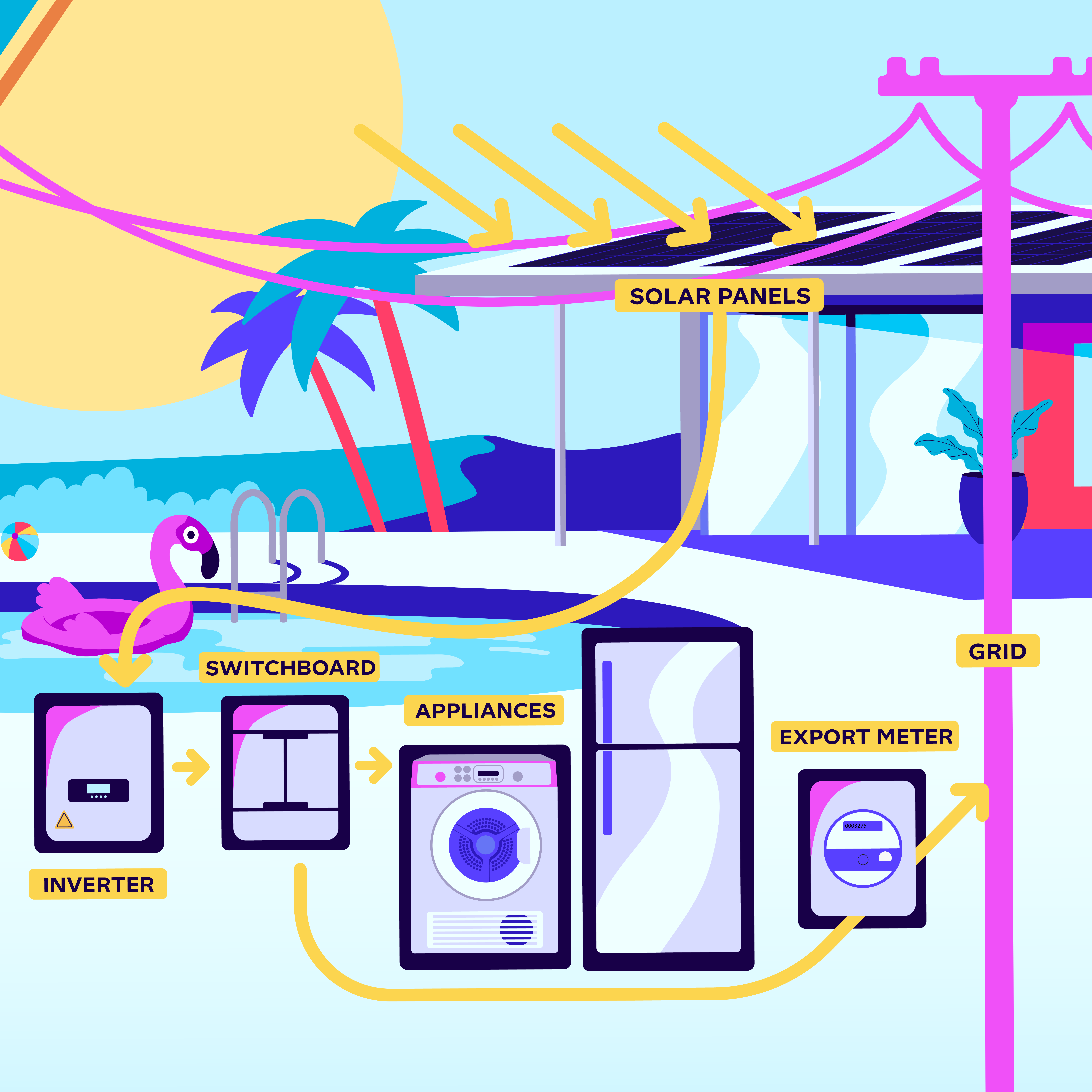How Does Solar Work?
Nearly 40% of our customer base have solar installed on their roof, giving Octopus Energy one of the highest proportions of solar customers in New Zealand.
In December, our solar customers exported a massive 1.5GWh of electricity - excess electricity that they sold back into the grid for all New Zealanders to use. That’s about the same that 200 homes would consume in a year.
New Zealand is getting long sunshine hours this summer, so it’s a good time to consider if solar is right for your home. Although many of our customers have solar, it’s still a relatively new way of managing your power and power bills. We’ll be posting these handy guides to help figure out if solar is for you.
So how does Solar work?
The sun is a very abundant renewable energy source and more and more people are starting to harness that power to reduce energy bills and their carbon footprint.
When the sun is shining the solar panels absorb light, generating electricity, and the inverter converts this into a form of electricity household appliances can use. The electricity generated is used to power any household appliances in use during that period. Any excess electricity is exported directly to the grid where it can be used elsewhere.
Generally, the solar power that is exported back to the grid is used to offset what is used locally in your region.
The below image shows the flow of solar power in your home.

Feed-In Tariffs
You may have heard of the terms ‘buy-back rate’, ‘feed-in tariff’ or ‘export rate’. These refer to the rate your power retailer pays you for the excess electricity that is sold back to the grid.
The excess electricity is measured by an export meter (which is installed with your solar panels). Retailers, like us, offer a fixed buy-back rate per kWh for electricity you export.
Octopus offers a market-leading uncontracted buy-back rate of 13 cents for every kWh you export. This is paid out in the form of credits to offset your total power consumption.
When the sun isn’t shining and your system isn’t producing much power, like when when there is cloud cover or during the long winter nights, then the power you need for your home will be drawn from the grid as normal. This uses up the solar buy-back credits you’ve earned. If they're used up you pay the standard usage rates.
When to consider Solar?
If summer is making you think it’s time to consider solar, check out our blog Is Solar Right for Me?
A solar system is a great option for homeowners with high energy needs during the day, or who can shift the bulk of their usage to the middle of the day when the sun produces a lot of electricity. Utilised well, it can also offer some protection from the electricity market rates over the long term.
The final consideration is whether you can also include a battery. A battery allows you to store that excess electricity that would otherwise be exported to the grid to use when solar is not being generated, giving you even greater control over when you use your solar generation throughout the day and night.